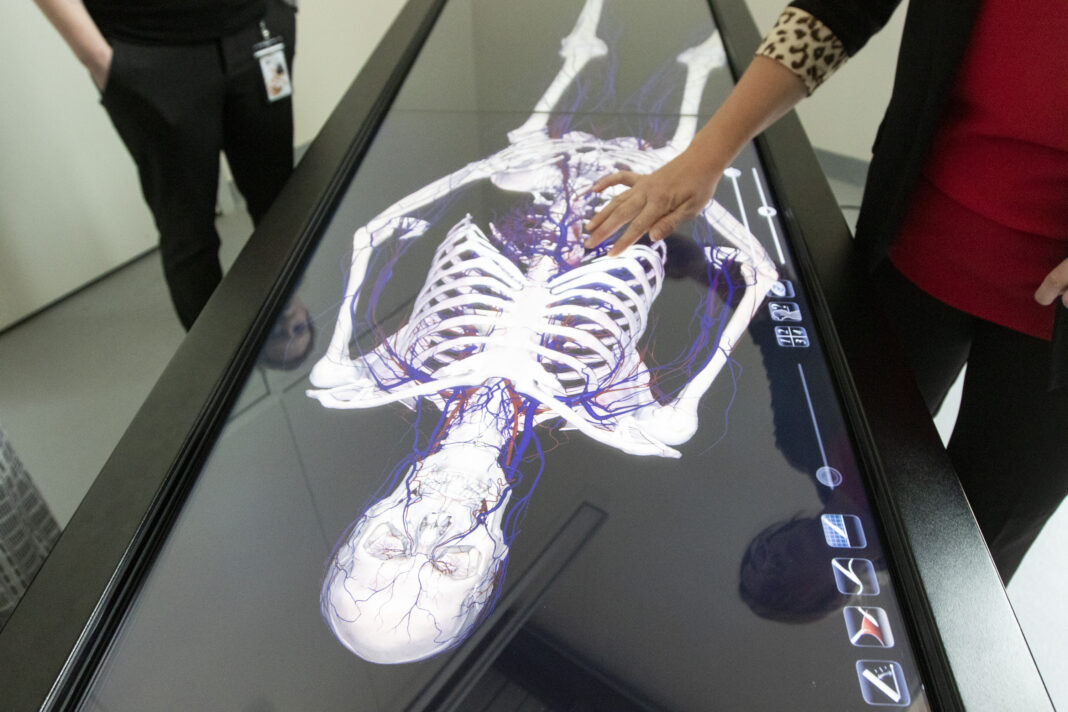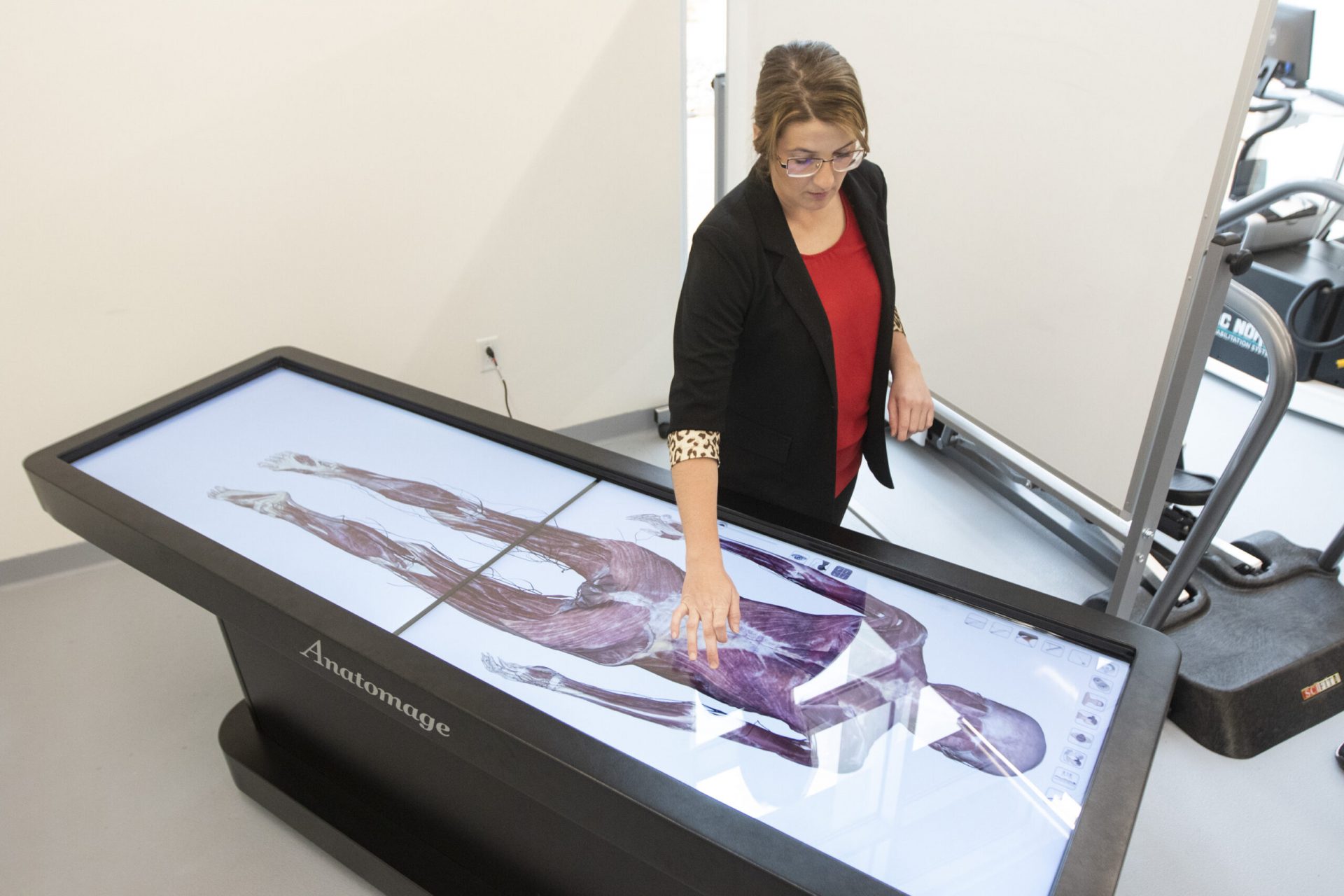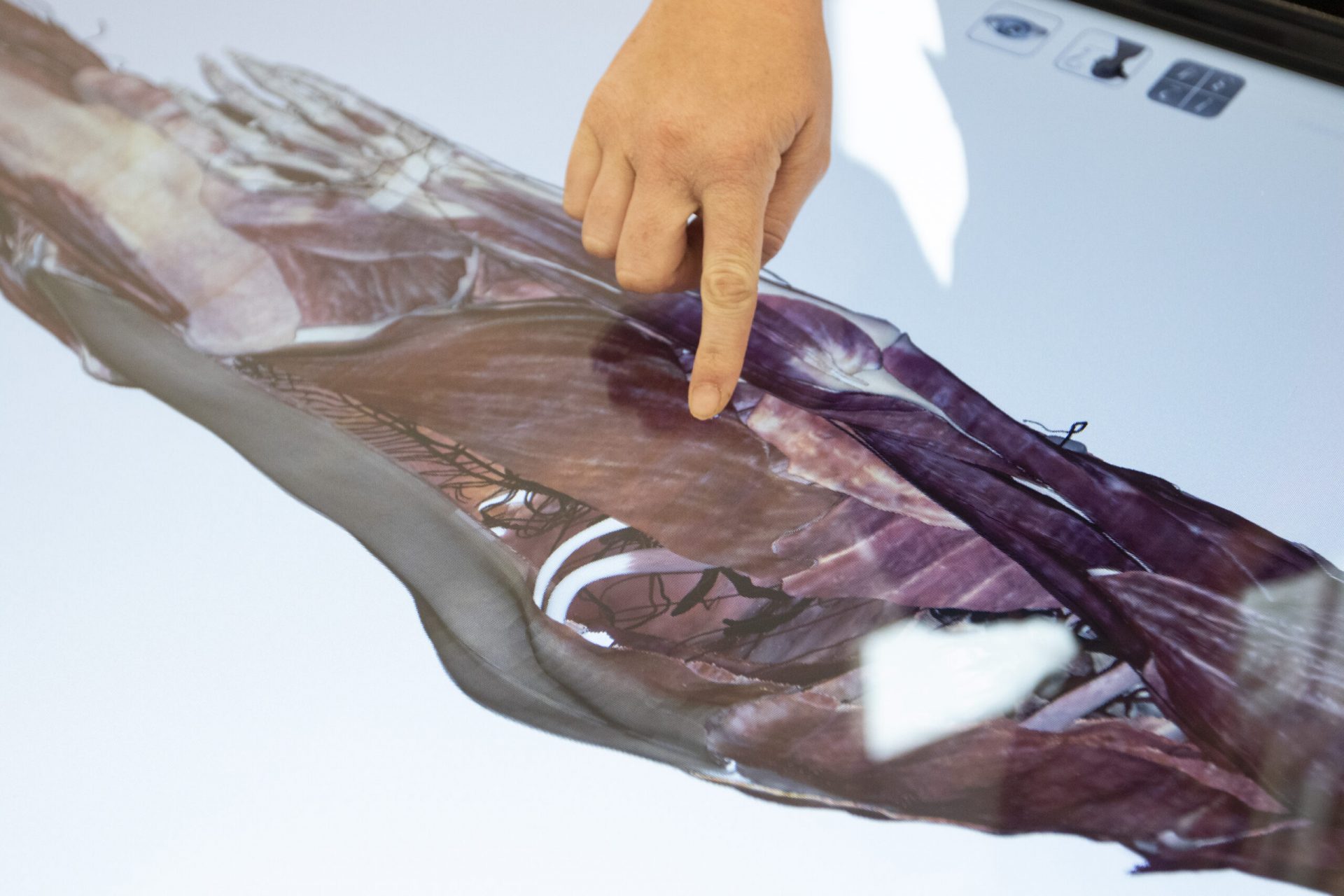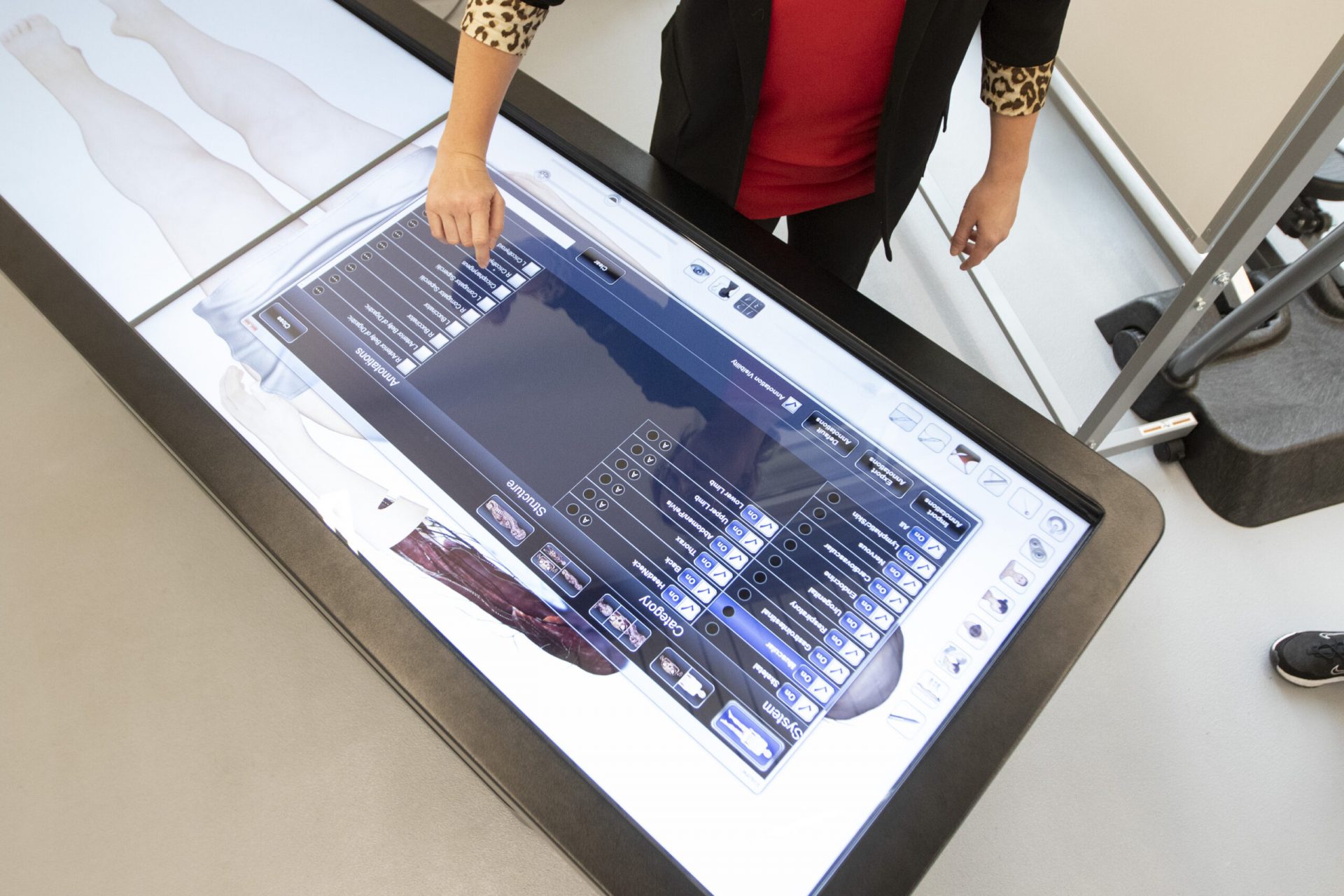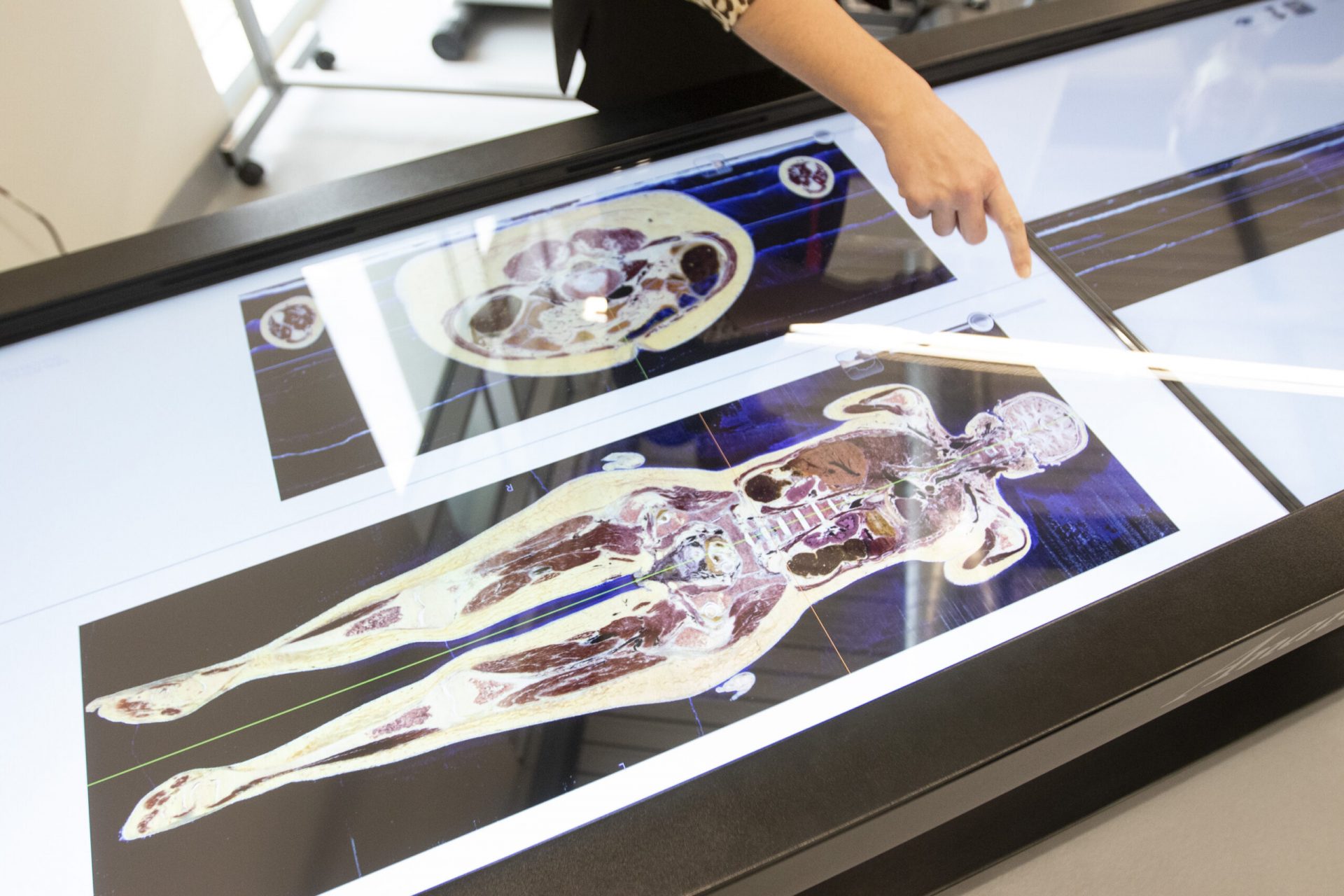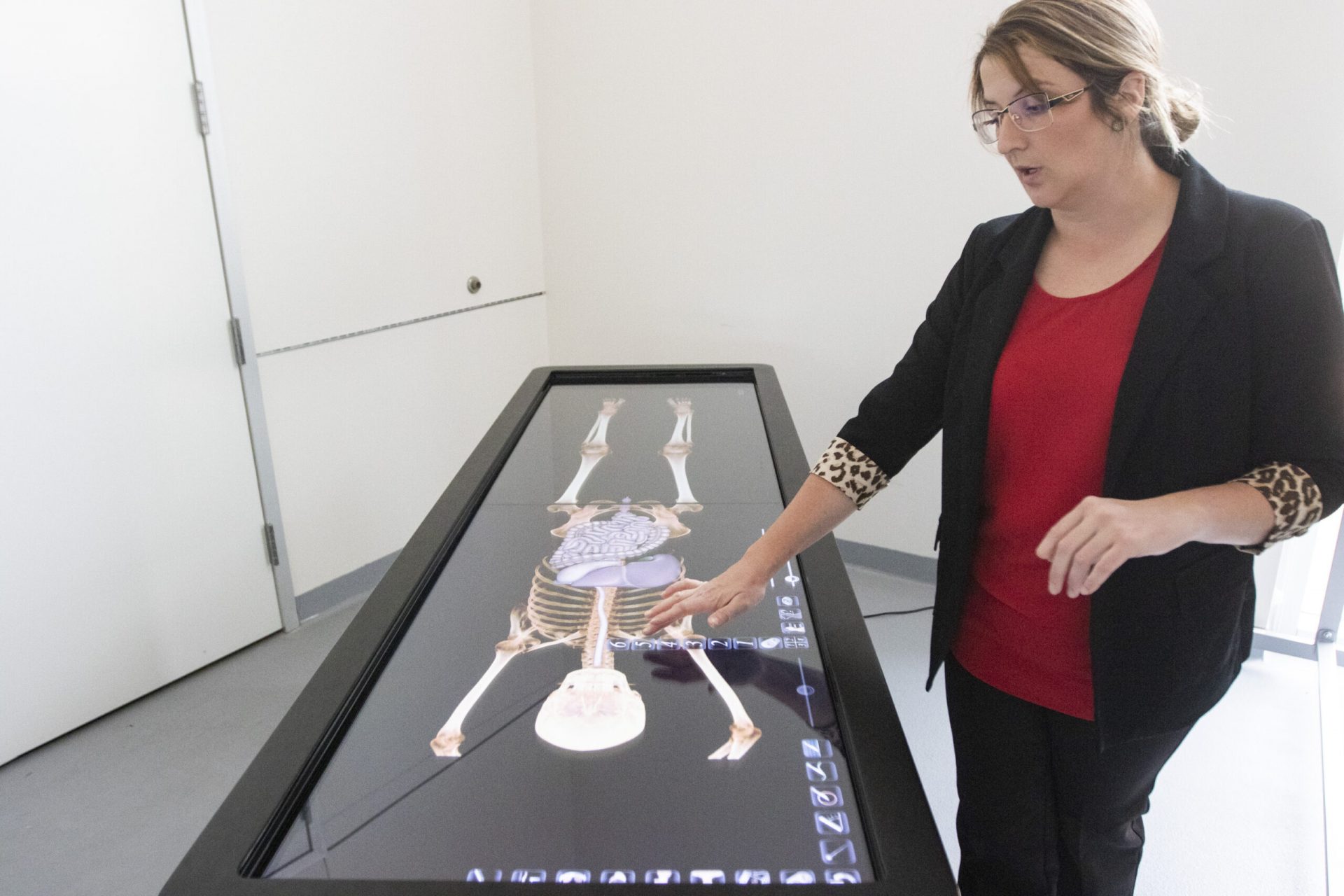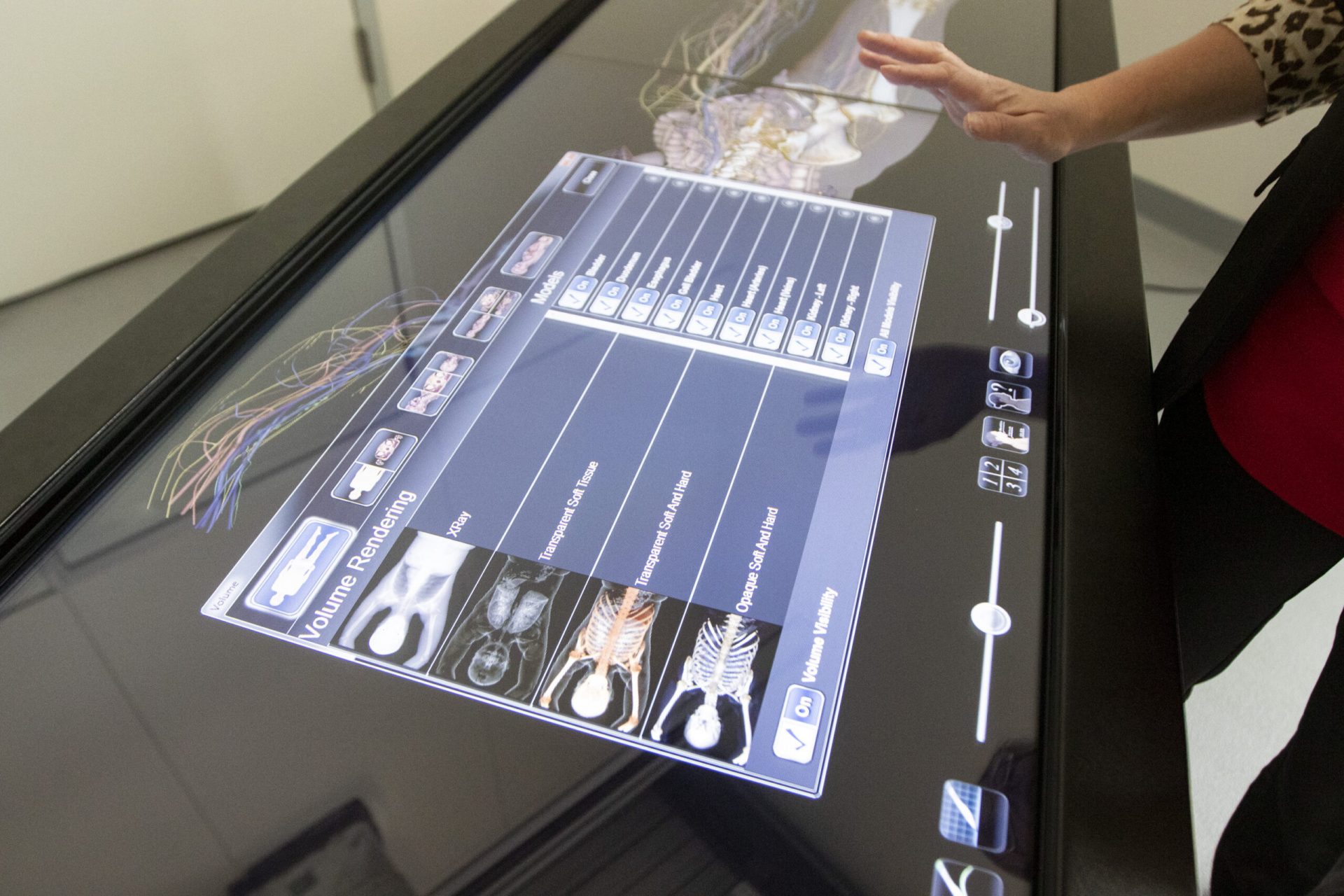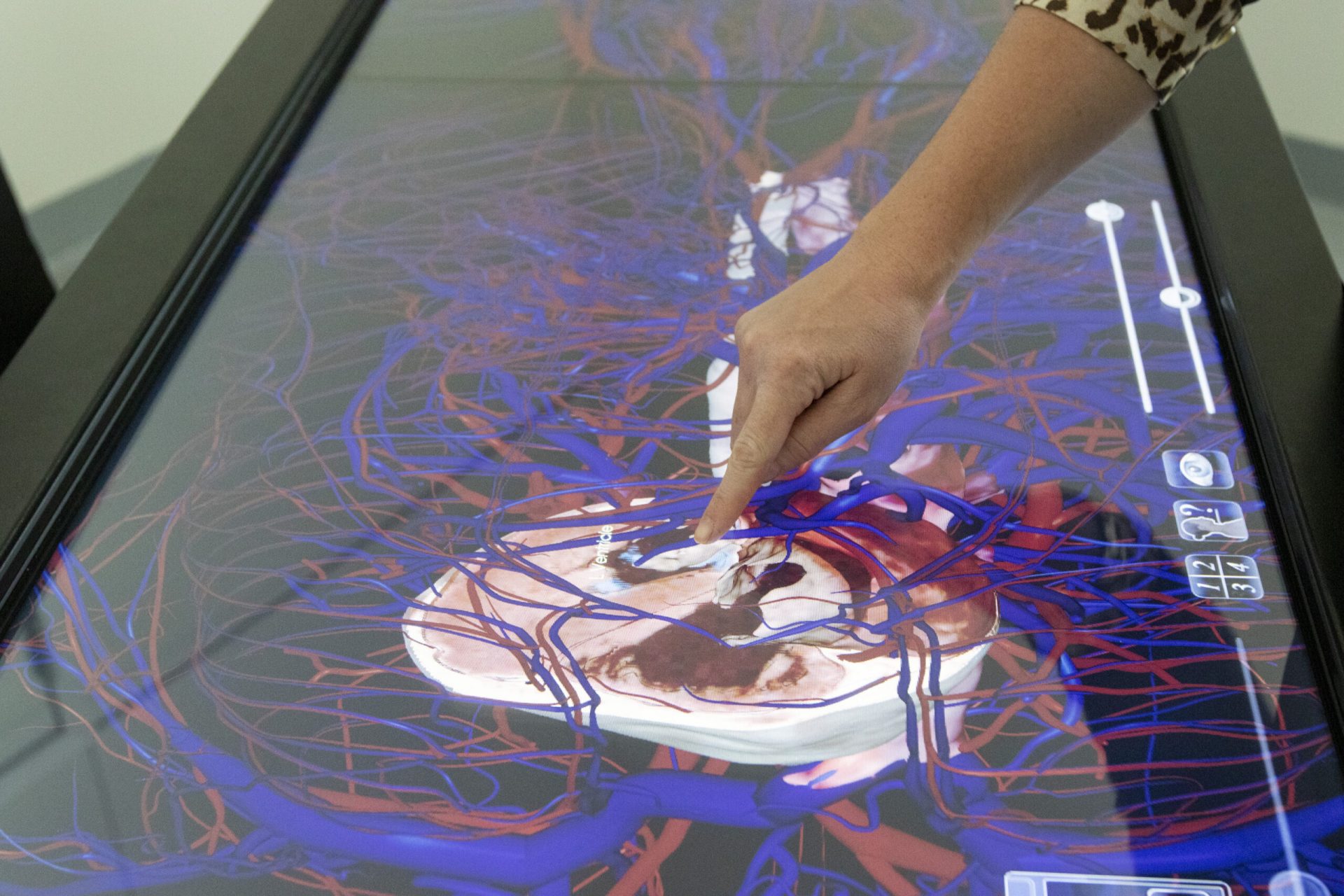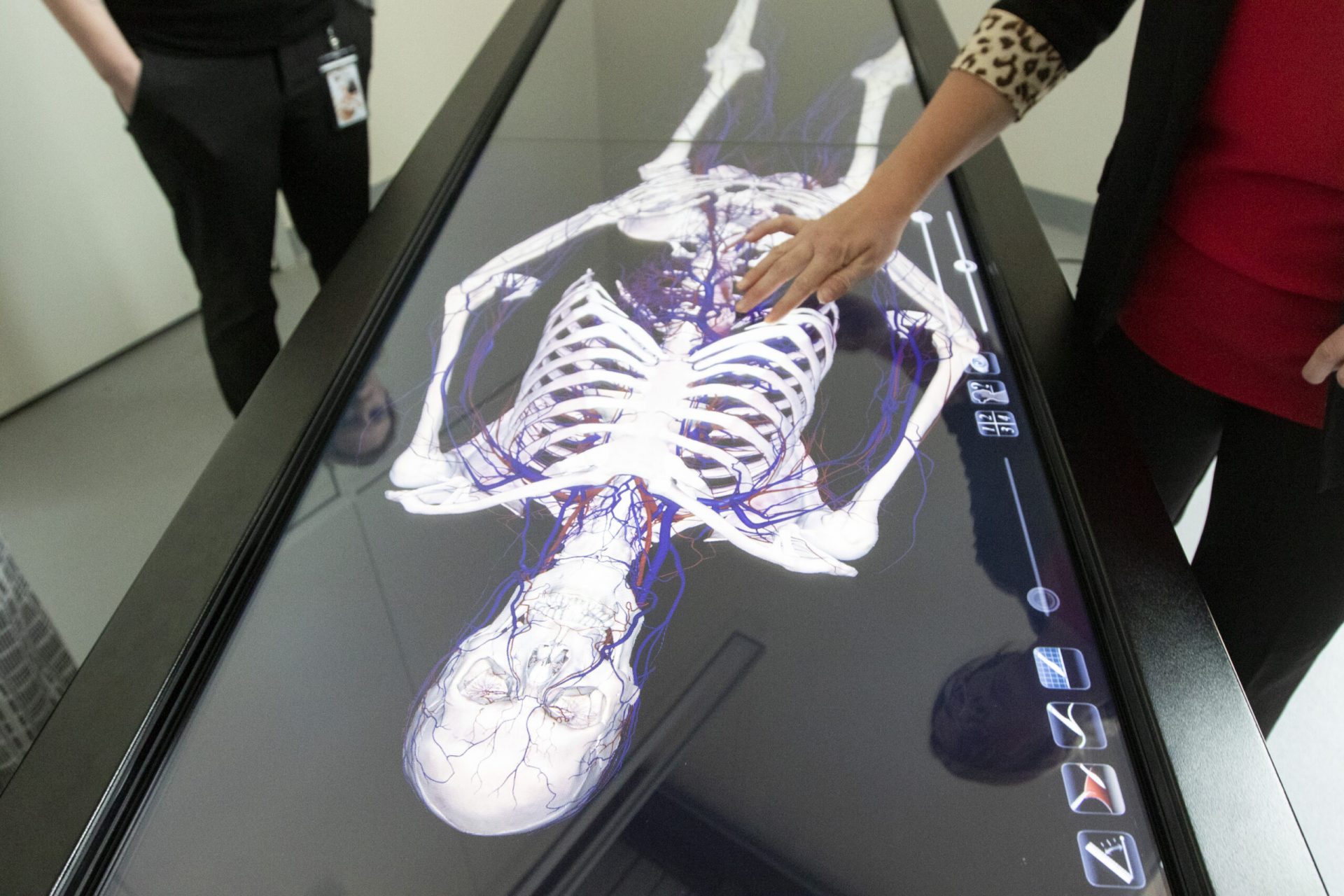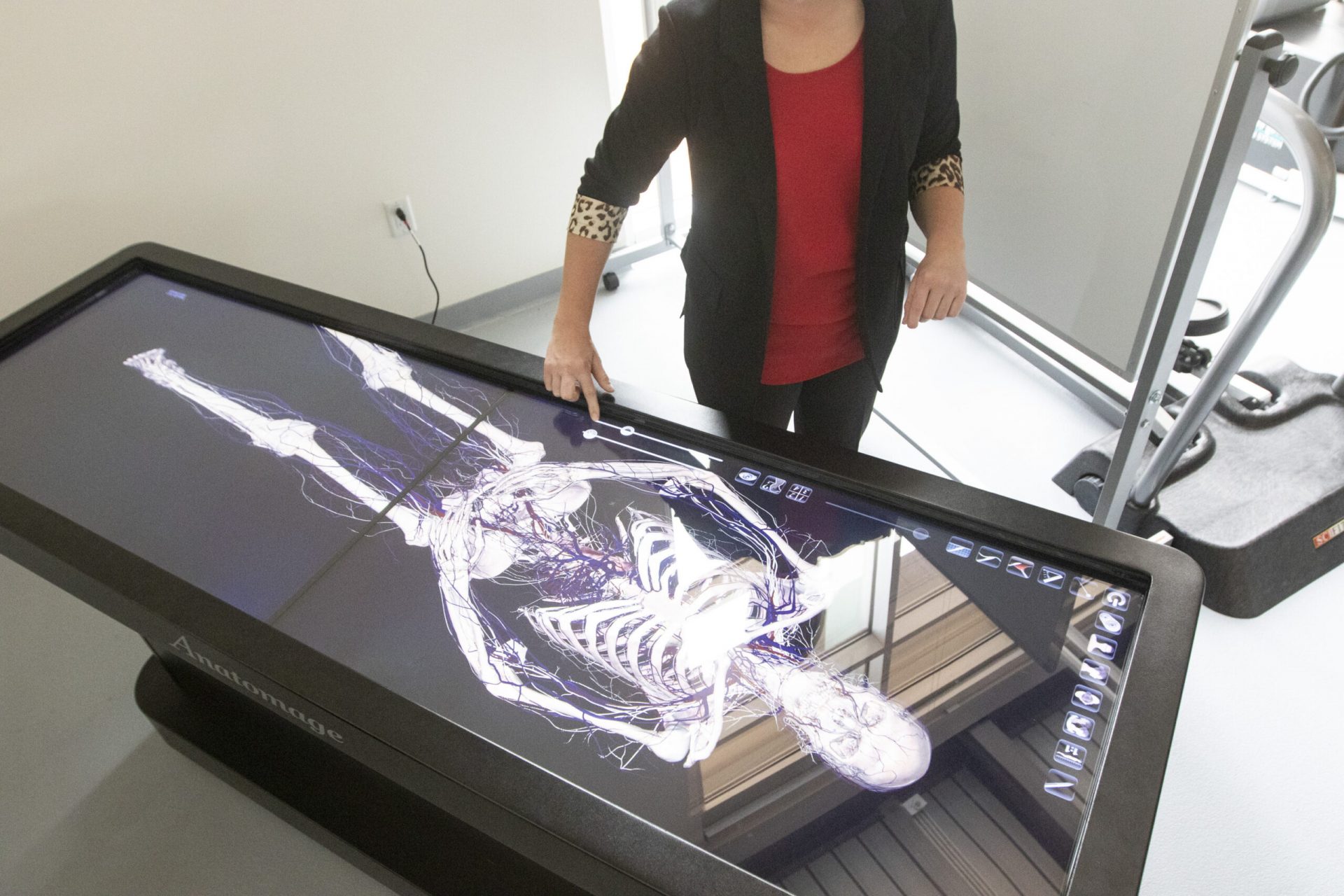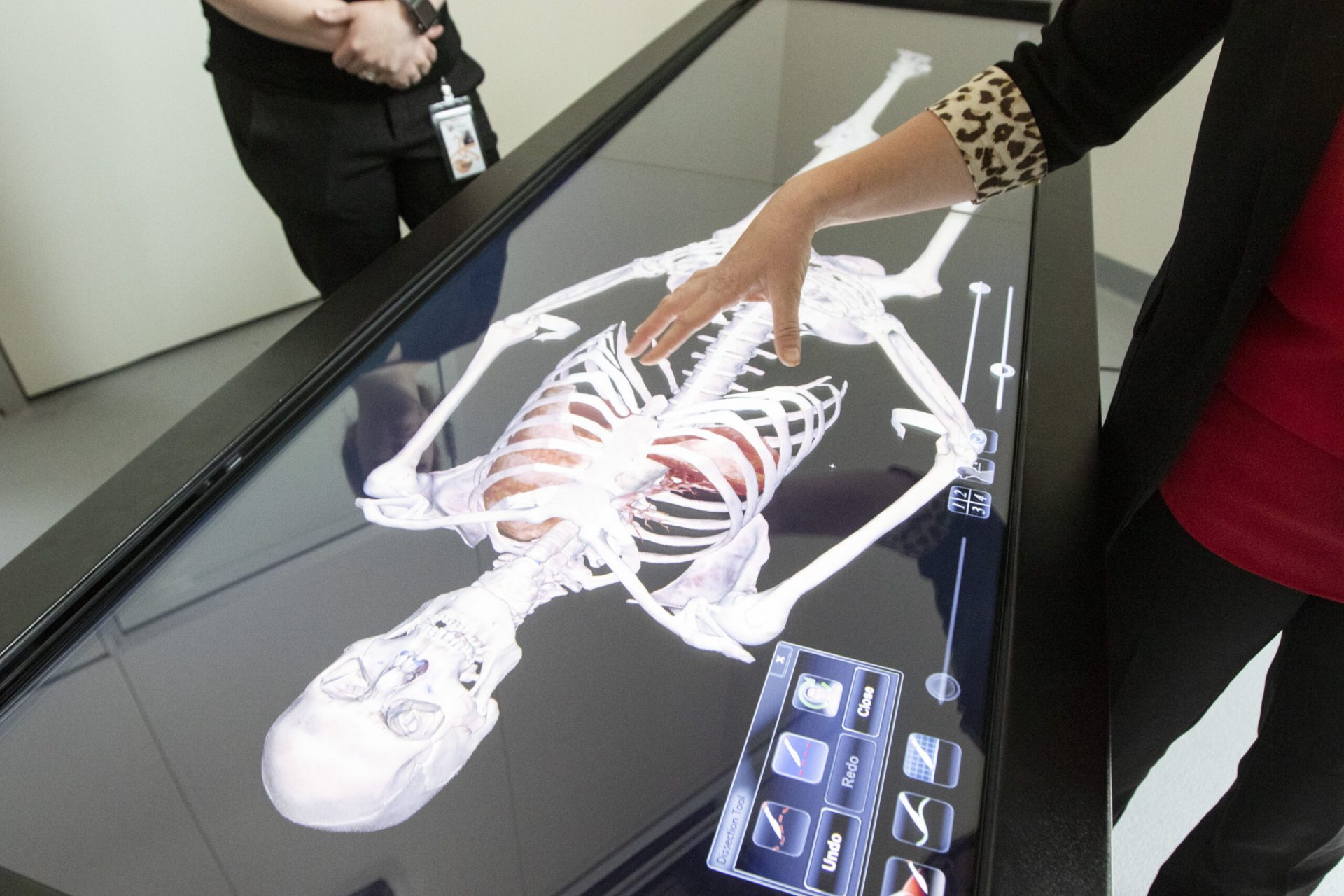The University of Texas Permian Basin College of Health Science and Human Performance has added two recent attractions — the Anatomage Table and the biomechanics lab.
The biomechanics lab studies human movement and the Anatomage Table is a 3-D simulated model of the human body that electronically cuts through the body.
“You can pull up different layers, depending on what you’re studying,” said Denise Dunne, director of the Simulation and Learning Resource Center, Labs and Experiential Learning.
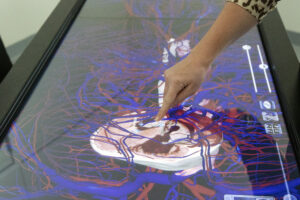
Alanna Dennison, academic chair of the Department of Athletic Training and program coordinator of the Department of Kinesiology, said they typically teach anatomy in sections such as bones and joints, muscles, the nervous system and the heart.
“This lets us combine all of those things together, so students get a little better look at the whole picture and how things actually work together instead of looking at individual systems,” Dennison said.
Dunne said it didn’t unsettle students as much as going into a dissection lab “with a whole human body actually dissected into each layer.”
Dennison said students can simulate cutting a heart in half, look at the top and bottom halves and every angle in between.
“… In that way it’s not as tactile. If you’re doing an actual dissection, you get to touch the stuff and feel it’s a little bit different. But this is really the next best thing. I’ve had a lot of the synthetic cadavers at other places. Even though they’re tactile and it’s still more hands on, they’re not close to this,” Dennison said.
“We can also integrate CTs and MRIs into the Anatomage. So if you have them, you can actually plug them in. … You can have your anatomy pulled up on one side with the CT or MRI on the other side. They can look kind of at normative and (that) helps them to get a little bit better orientation on what they’re actually looking at,” she added.
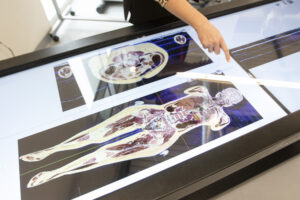
Dennison said you can create any combination you want.
“You can do the vascular system and the nerves only, or just the bones and ligaments …,” she added.
Quizzes can be created where students can identify structures.
Dunne said when programs are expanded with funding from the Permian Strategic Partnership, the anatomy and physiology courses will use the Anatomage Table heavily.
She noted that there is a lot more information there than looking at a piece of paper.
Dunne said it’s more impactful to learn this way in lieu of studying a cadaver, which tends to be expensive.
“… We would schedule time for students to come in and practice on it with the simulation staff, so that when it comes up for quizzes and exams … they already have an idea of what they’re supposed to be doing,” Dunne said. “I think the practice part is really what ingrains the information.”
While they are different, the Anatomage Table and biomechanics lab are intertwined.
Dennison said the biomechanics lab uses the same software that was used to develop Fortnite. It also is similar to what movie makers use to create animated characters.
“We’d like to eventually get to a point where we have an entertainment branch off of the biomechanics program,” in about five years, Dennison said.
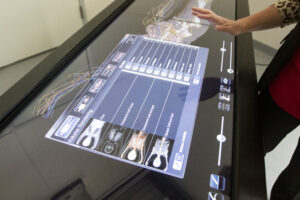
Biomechanics falls under athletic training and kinesiology.
Dennison said the devices look at the whole body. You don’t have to be injured to use the biomechanics lab.
“… We can gain a lot of information from both the healthy people and the people who were injured. Having normative data to compare the injury data to is helpful also. We can also do a lot from a performance enhancement standpoint in there, so if we’re able to identify some deficits or challenges, we might be able to fix them based on that and either prevent an injury or improve performance,” Dennison said.
She added that there also is Sports Science Technology. “That looks at muscle activation and some other biometric factors that also can be integrated. We can look at the movement analysis piece and the biometric piece to get a little bit better picture,” Dennison said.
She added that there is a lot of research in biomechanics — everything from gait analysis to throwing mechanics to how people jump.
“Every facet of human movement can be analyzed in there. We can do evaluations based on injuries, or based on certain compensations, or movement patterns. Or we can look at collecting normative data. We could look at interventions, so maybe it’s a strength and conditioning program, or a rehab program, and identify if the interventions are working based on data that we can collect …,” Dennison said.
“… That lets us compare and identify if we’re actually making an impact on what we think we’re making an impact on,” she added.

